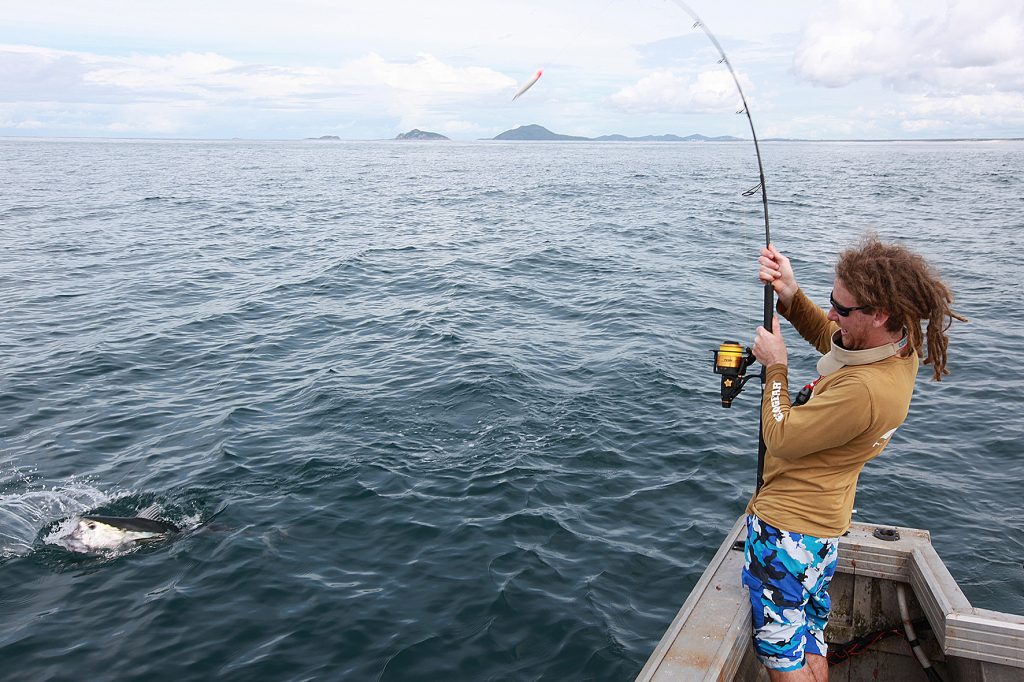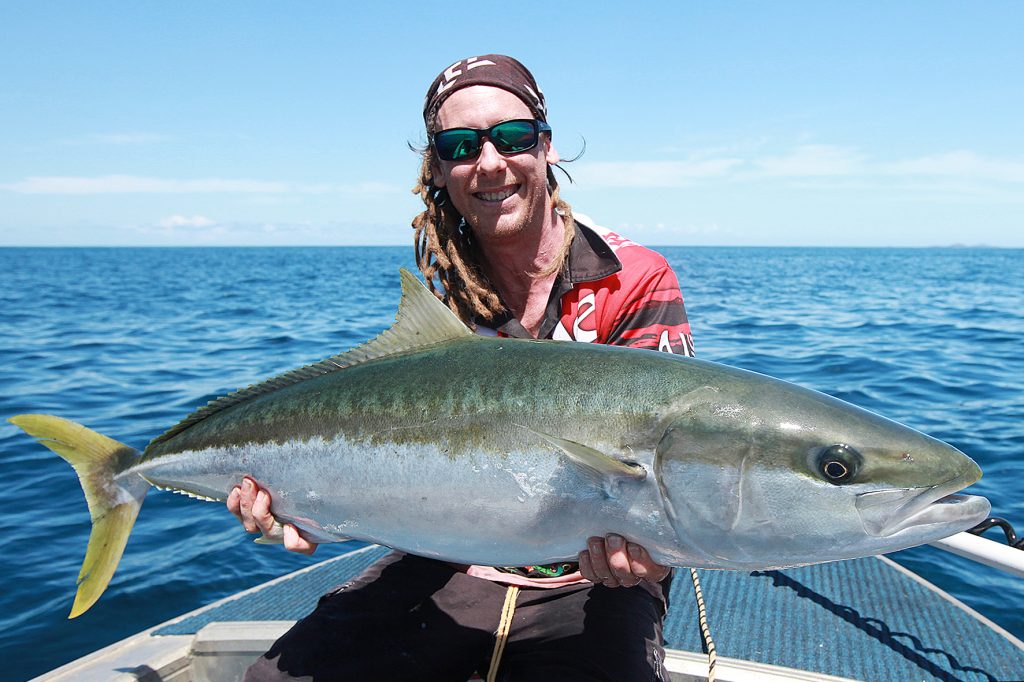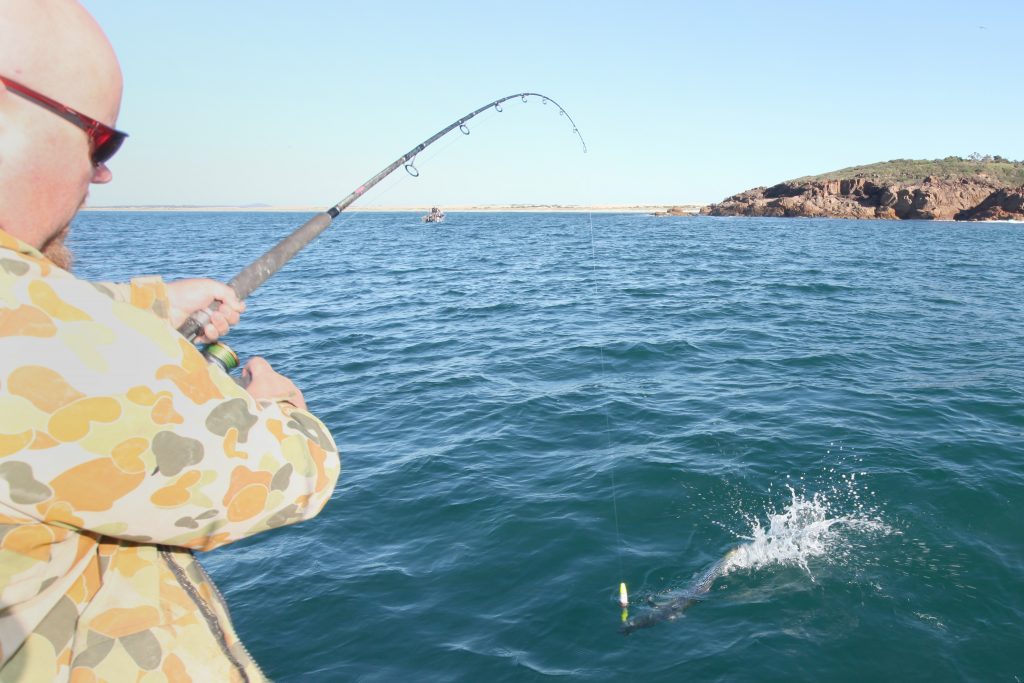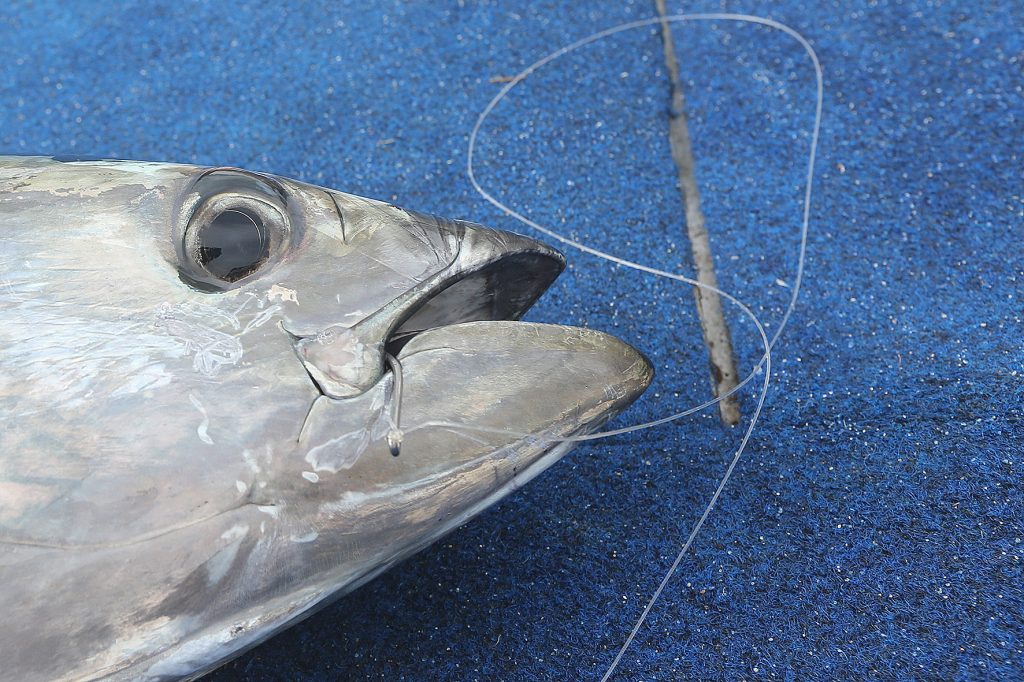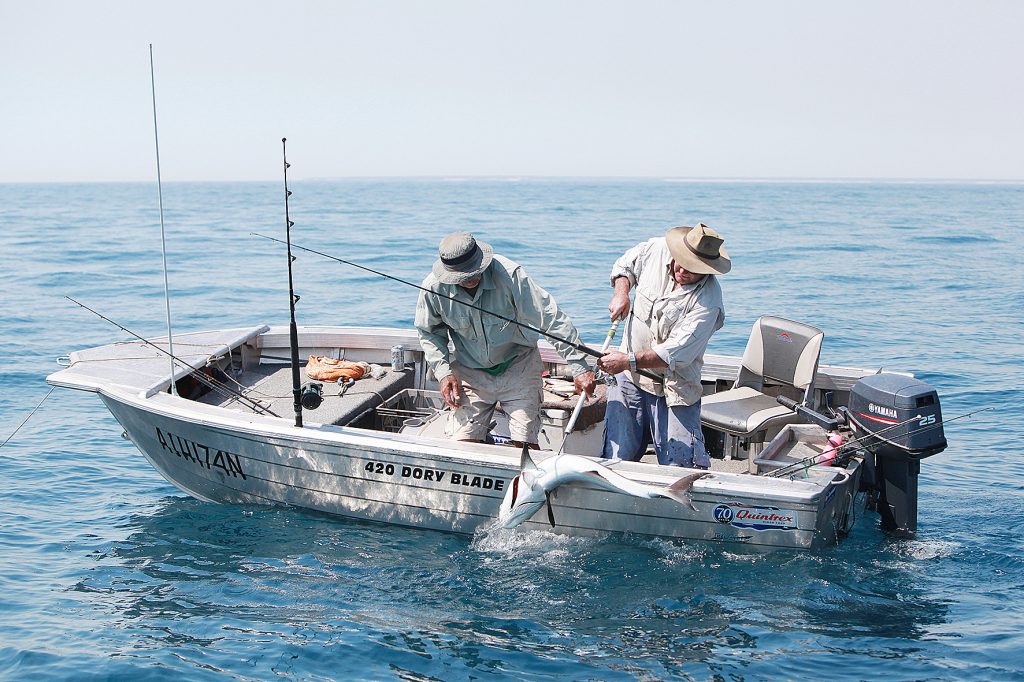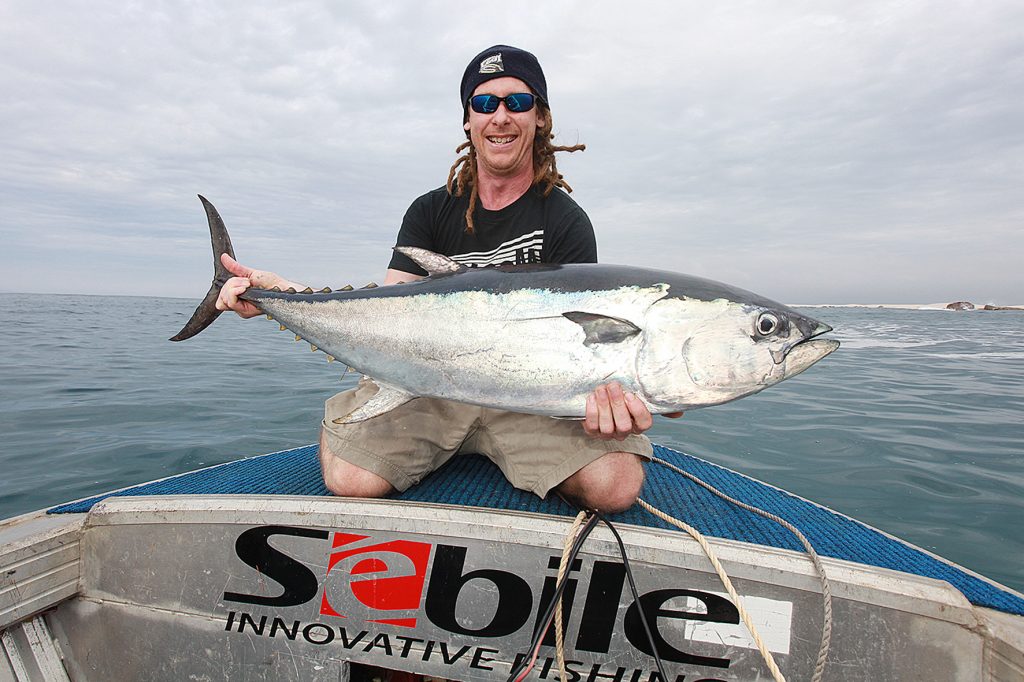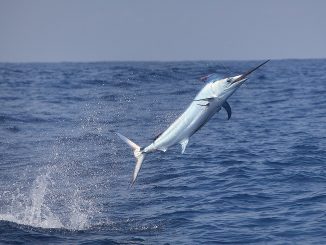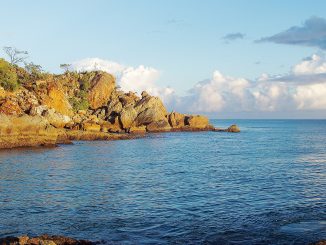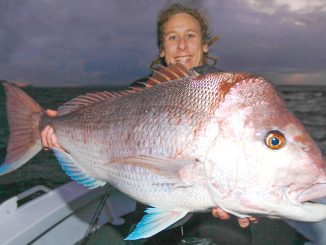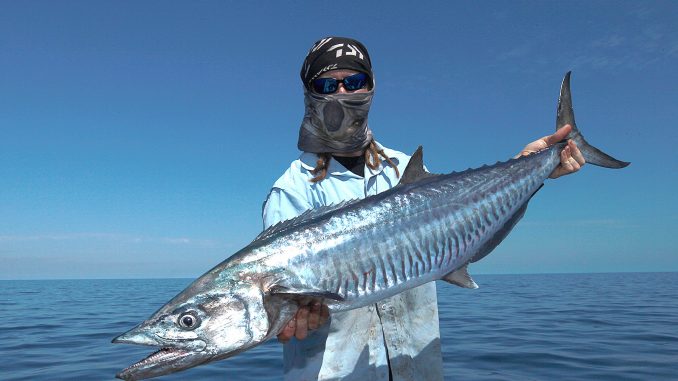
by Paul Lennon •
On the mid-north coast of NSW live baiting the inshore reefs, islands and headlands is an extremely good way to get connected to some serious fish. Kings, black marlin, longtail tuna, Spanish mackerel, mac tuna, bonito, cobia and even the odd stonker snapper are all live baiting possibilities.
While you can potentially catch any of the above species with a range of live baiting methods your success rate improves dramatically when know what and where works best for each fish.
This is why it’s important to know what fish your targeting and how to identify potential areas for them.
The first thing you should be looking for are environments holding common food sources.
For species like longtail tuna, Spanish mackerel, kingfish and cobia prime areas are ocean headlands with deep reefy bottom, where schools of slimy mackerel and yellowtail concentrate. Kingfish and longtail tuna will also move right up into shallow rocky bays and coves looking to feast on schools of garfish.
Often these kinds of areas are accessible by land, which dedicated hardcore land-based anglers take full advantage of, landing some spectacular catches from the rocks every year.
If you’re boat-based the live baiting options are greatly increased for the above species, as shallow reefs and islands close to the coast become accessible. Here you are less likely to catch longtail tuna as they prefer to hug the coastline, but have a great chance of hooking into a black marlin.
This is especially the case on those inshore reefs holding baitfish in 20-40m of water.
The two most popular ways to fish live baits are to either drift them out suspended under a float or to slow troll them through high-potential areas.
While the preferred method for tuna is live baiting under a float, the best way to target marlin is slow trolling. For the other species the most productive style will largely depend on the areas you’re fishing.
For larger reef systems and around islands it’s best to cover as much territory as you can, which is why slow trolling these parts will work best.
On the flip side, if you’re fishing for kings in a small bay full of garfish, or for a cobia on an isolated bommie, or a particular point that juts out then anchoring up and sending live baits out under floats will be the better option.
Trolling
When it comes to trolling there are a range of baits that will work. When baits tough to find a yellowtail or even a pike will do the job however slimy mackerel are probably the best all round bait. Big kingfish and cobia also love a slow trolled calamari squid or small bonito.
It’s best to run two rods when trolling, with one up high in the water column and one deeper. This is where a downrigger really comes into its own, allowing you to set the ideal depth you want your bait at. If you don’t have a downrigger an elastic band with snapper style sinker attached to the leader will be a good substitute.
Leader size and main line will depend on what you’re targeting. If it’s big hoodlum kings you will need around 3m of 80-100lb leader coupled with 60-80lb braided or 24kg mono outfits. Black Magic fluorocarbon leader is the best leader for this type of work, as it’s super abrasion resistant making it ideal for brutal kingfish fight in rugged terrain.
Hook choice you’ll find it hard to go past the Black Magic DX 6/0 or KS 7/0-8/0, depending on bait size.
For black marlin the same leader size will also be perfect for handling the scuffing caused by bills even in a long fight on 100kg inshore fish – I’ve never had it wear through. For marlin stick with mono line, preferably IGFA class, something like Black Magic IGFA 10-15kg, and use BM KLT 7/0 circle hooks.
All baits when trolling should be bridle rigged using either elastic bands or a loop of mono. Trolled baits should be fished in free spool to give the fish a chance to get the bait down before hooks are set. This is why overhead reels are the preferred reel for this type of work, however, baitrunner style spinning reels are gaining popularity for 10-15kg mono line classes and up to 50lb braid.
Using floats
The best bait to run under a float is again a slimy mackerel, with garfish pike and yellowtail as good back ups.
I like to fish with two rods out at different depths, one at around 2m and the other one around 5m. The rig is simple with the length of your leader giving you your depth and a torpedo float running up the leader between your joining knot and hook. For the deeper bait a small pea size sinker can also be added on top of the hook.
A good hook for this is the Black Magic DX 6/0. They are deadly sharp and since switching to them last year I don’t think I’ve missed one tuna.
Live baits under a float are best pinned gently behind the shoulder just above the lateral line, with the exception being garfish that last longer when hooked just behind the anal fin on the underside of the fish. For the leader try Black Magic flourocarbon around 60lb, unless you’re targeting big kings, then up it to 80 or 100lb.
Outfits can be either overhead or spin with 15kg mono or 50lb braid ideal for this type of fishing. If you do opt for the spin option, baitrunner reels are the way to go as you want your reel to be in freespool when the fish takes the bait then easily engaged into gear when it’s time to strike. That’s live baiting in a nutshell, now you’ve just got to get out and do it.

